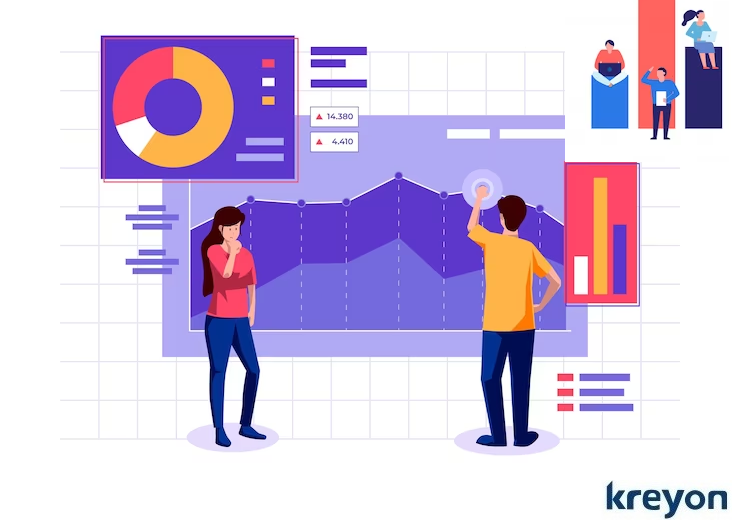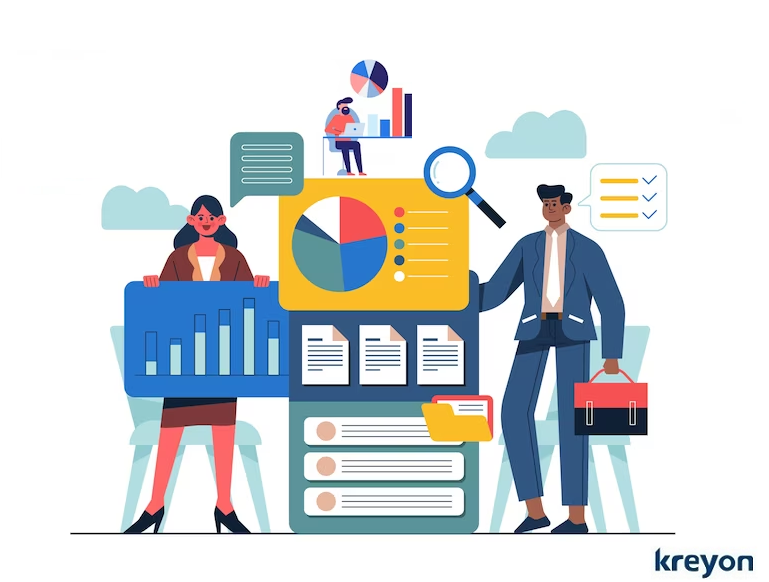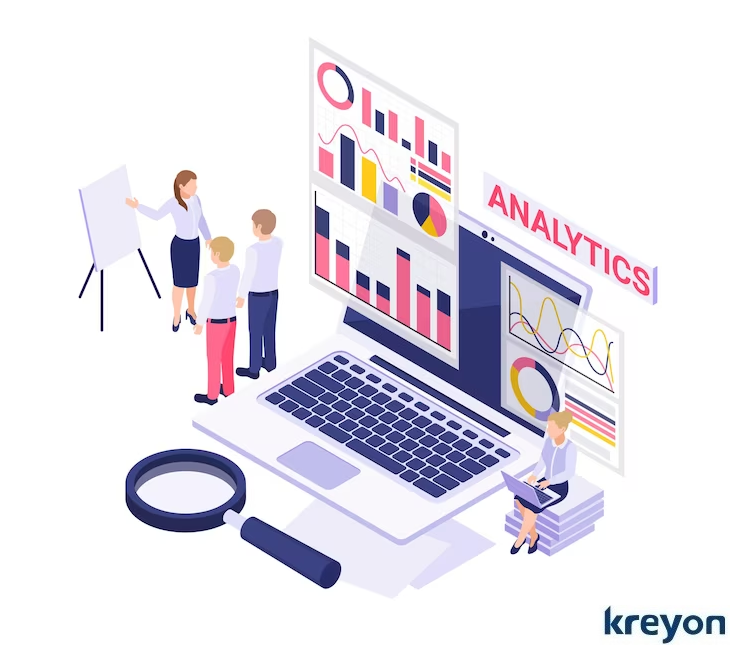Data Visualization Best Practices for Business Analytics

Data visualization best practices help businesses to make sense of the vast amounts of information available. It is crucial for informed decision-making. This is where data visualization comes into play.
Data visualization is the art of representing data in a graphical or pictorial format, allowing businesses to uncover insights, identify trends, and communicate complex information effectively.
However, not all data visualizations are created equal. To harness the full potential of data visualization for your business analytics, it’s essential to follow best practices that ensure clarity, accuracy, and actionable insights to empower your business.
1. Know Your Audience
Before diving into creating visualizations, it’s paramount to understand your target audience or users:
Who will be consuming these visualizations, and what information are they seeking?
Who are you trying to communicate with?
What do they need to know?
What level of detail do they need?
Executives might need high-level summaries, while analysts require granular details. Tailor your visualizations to cater to the specific needs, roles and expertise of your audience.
This customization ensures that the visualizations provide relevant insights and are more likely to drive informed decisions.
For a busy executive, the interactive visualisation of data can help them spot items that need their urgent attention. For e.g. leave requests of employees, travel expenses approval, invoices payment etc.
2. Choose the Right Visualization Type
There’s a plethora of visualization types available, ranging from bar charts and line graphs to heatmaps and scatter plots. Each type serves a specific purpose and is suitable for particular types of data.
For instance, if you’re showcasing trends over time, a line graph might be the best choice. If you’re comparing categorical data, a bar chart could be more effective. Picking the right visualization type ensures that your data is accurately represented and easily comprehensible.
The time scale is also pertinent, ideally you want to present data that is meaningful in business context. Data visualization needs to be flexible as per the needs of the users.
3. Simplify and Declutter

While it’s tempting to include as much information as possible, overcrowded visualizations can be overwhelming and counterproductive. Embrace simplicity by focusing on the key message you want to convey.
Remove unnecessary clutter, labels, or gridlines that don’t contribute to the understanding of the data. Remember, less is often more when it comes to data visualization.
The labels on your data visualizations should be clear and concise. They should be easy to read and understand, and they should accurately reflect the data being presented.
4. Use Color Wisely
Color is a powerful tool in data visualization, but it should be used purposefully. Choose a color palette that enhances readability and conveys meaning. For example, use contrasting colors for different data categories to make them easily distinguishable.
Avoid overly bright or neon colors that could strain the viewer’s eyes. Additionally, ensure your visualizations are still understandable when printed in black and white.
Data visualization best practices invovle presentation of information in intuitive ways. Highlighting the actions with contrasting colors, for e.g. red color or notifications for things that need immediate attention is helpful.
The idea is to summarise key items into actionable form for the employees to boost their productivity.
5. Provide Context and Annotations
A data visualization without context can lead to misinterpretation. Always provide context by including titles, labels, and descriptions.
Annotations – explanatory notes on the visualization – can add depth and clarity to your insights. These tool tips and help can be added on hover movement of the cursor to avoid clutter.
If a sudden spike in sales was due to a special promotion, annotate that on the visualization. Contextual information prevents data from being taken out of context and helps the audience make accurate conclusions.
6. Ensure Data Accuracy
Inaccurate visualizations can lead to misguided decisions. Thoroughly review your data sources and perform necessary data cleaning before creating visualizations. Double-check axes, labels, and calculations to prevent errors.
When presenting data, transparency is key: mention the data sources and any assumptions made during the visualization process.
While data is being visualized, it is important to be mindful of your own biases. Your own experiences and expectations can influence the way you present data.
7. Use Appropriate Visualization Tools
The choice of visualization tool can significantly impact the quality of your visualizations. There are various tools available, from simple options like Microsoft Excel and Google Sheets to more advanced platforms like Tableau, Power BI or bespoke visualizations.
Choose a tool that aligns with your skill level and the complexity of the visualizations you need to create.
8. Mobile Design for Dashboards
In the age of mobile devices, it’s essential to create visualizations that are responsive and easily viewable across different screen sizes. This is particularly important if you’re creating interactive dashboards for business analytics.
Test your visualizations on various devices to ensure they maintain their integrity and functionality. Use visuals to highlight the key points of your data visualization. This could be done by using different colors, shapes, or sizes.
9. Tell a Story with Your Visualizations

Visualizations shouldn’t just present data; they should uncover a compelling story. The visualisation of data should be dynamically drive by intelligent software. It should help understand data patterns and uncover new opportunities for their business.
Craft a narrative that guides the viewer through the insights you’ve uncovered. Start with an introduction, present the main findings, and conclude with actionable takeaways. A well-structured narrative keeps the audience engaged and makes the data more memorable.
Data visualization should be used to communicate insights and findings about the data. For e.g. inventory procurement for electrical goods can highlight times of the year when the price is at its lowest to the procurement manager.
10. Iterate and Improve
Data visualization is an iterative process. Don’t settle for your first draft; gather feedback from colleagues or stakeholders and refine your visualizations accordingly.
As your business analytics evolve, so should your visualizations. Stay updated with new techniques and trends in data visualization to continuously improve the impact of your insights.
Once you have created your data visualization, test it with your audience. Get feedback on what they understand, what they don’t understand and anything important that is not captured in the visualization.
Conclusion
Data visualization best practices are a potent tool that can transform raw data into actionable insights, driving informed decisions for businesses.
By following these best practices, you can elevate your data visualizations to new heights. Whether you’re presenting to executives, collaborating with analysts, or sharing insights across departments, effective data visualization is your gateway to unlocking the true potential of your business analytics.
Kreyon Systems has expertise in enterprise software development for government & public corporations with end to end data lifecycle management. If you have any queries, please reach out to us.
